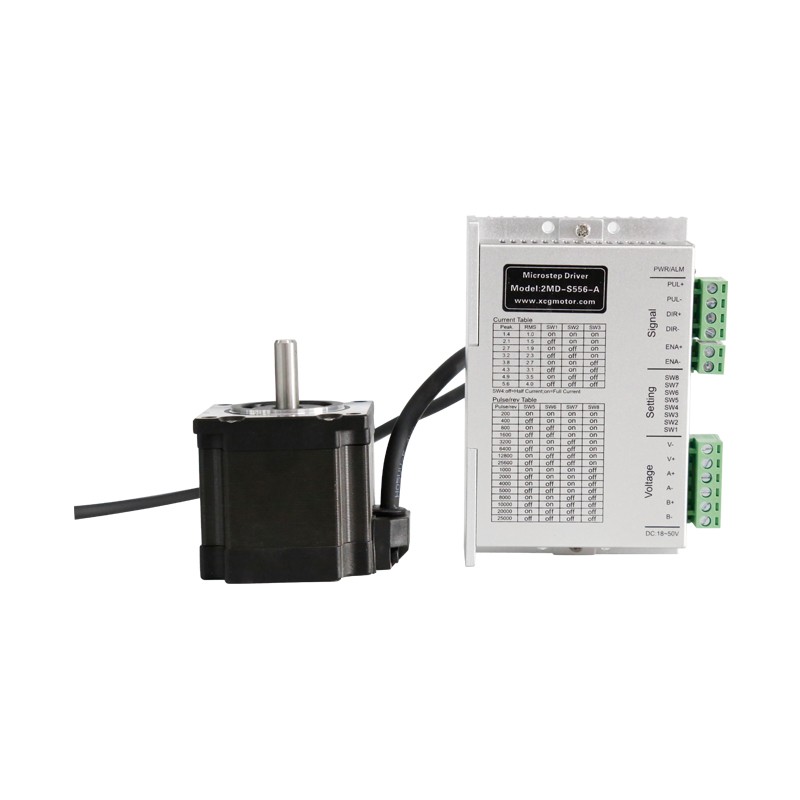Source:Industry News Release time:2022-05-27 Clicks: Popular:Reduction motor manufacturer

The steps, methods and application process of stepper motor driver to realize drive control
Feed pulse → pulse mixing circuit → addition and subtraction pulse distribution circuit → acceleration and deceleration circuit → ring distributor → power amplifier → stepper motor winding.
1. The pulse mixing circuit mixes pulse feed, manual return to origin, error compensation, etc. into positive and negative pulse feed signals;
2. The addition and subtraction pulse distribution circuit synthesizes the simultaneous positive and negative pulses into one-way feed pulses;
3. The acceleration and deceleration circuit adjusts the pulses to pulses that conform to the acceleration and deceleration characteristics of the stepper motor. The frequency changes must be stable and the acceleration and deceleration have a certain time constant;
4. The ring distributor converts the passing pulses into level signals to control the on and off of the stator winding of the stepper motor;
5. The milliamp level current output by the power amplifier ring distribution output device is used for power amplification, and is generally composed of a preamplifier and a power amplifier.
A stepper motor is an open-loop control element that converts electrical pulse signals into angular displacement or linear displacement. Under non-overload conditions, the motor's speed and stop position only depend on the frequency and number of pulses of the pulse signal and are not affected by load changes. That is, a pulse signal is added to the motor and the motor rotates by a step angle. The existence of this linear relationship, coupled with the fact that stepper motors only have periodic errors and no cumulative errors. It makes it very simple to control using stepper motors in control areas such as speed and position.
Recommended reading
Stepper motor manufacturers introduce the main parameters and characteristics of stepper motors
Characteristics of four series of reduction motors: R, F, K and S
Related Information
Stepper motor
2021-04-14CGXZK060
2021-01-13Planetary reducer
2021-04-15CGXZ115
2021-01-13Planetary reducer
2020-12-21CGF-042L2-16-P2
2020-12-21CGXK042
2021-01-13Stepper motor
2021-04-14Planetary reducer
2020-12-21Planetary reducer
2021-04-15CGF-060L1-10-P2
2020-12-21Stepper motor
2021-04-14CGXZK085
2021-01-13Fixed speed motor
2020-12-21CGXZK115
2021-01-13Does the stepper motor need to be equipped with a reduction motor?
2022-07-28Principles for selecting reduction motors
2022-08-08How to choose between cycloid reducer and hard tooth surface reducer
2022-09-24Stepper motor driver has powerful memory function
2022-06-17Reasons for reducer seal leakage
2022-12-29Introduction to brake stepper motor
2022-06-16Precautions for assembly of reducer
2022-09-27What is a hard tooth surface reduction motor?
2022-09-20Several key technical parameters to measure the performance of planetary reducer
2022-11-14Performance and characteristics of planetary reducer
2022-06-25What are the types and functions of common reduction motors?
2022-09-01Things to note when operating the servo reducer
2022-06-27The direct cause of linear reduction motor shaft breakage
2022-10-20A brief discussion on what issues should be paid attention to when purchasing a planetary reduction
2022-09-02What are the accessories for right angle reduction motors?
2022-10-15